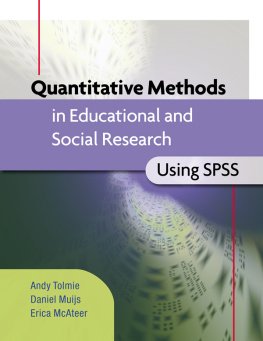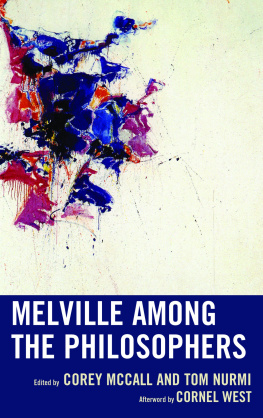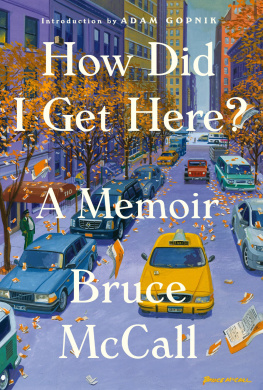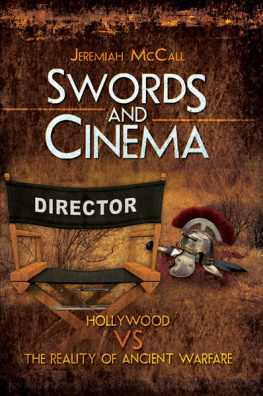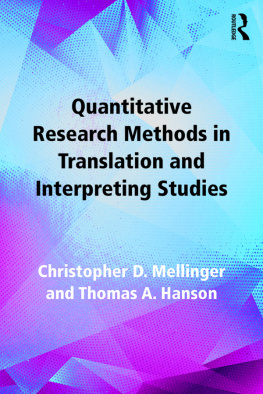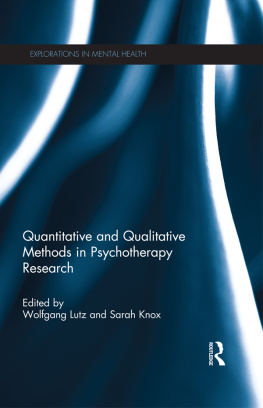Why I wrote this book
Since I started writing this book, Ive been asked one recurring question by everyone from my department chair to my own mother: why would you want to do something like write a statistics book? Now, as I type the final few words of this manuscript, I have an answer to this question: because its important. The current generation of archaeologists needs a practical and readable guide to using to statistical methods, to improve our ways of isolating quantitative patterns and build inferences about the past. After much cogitation, it occurred to me that statistics arent just a way of packaging the facts that we have already discovered in our investigations so that we can get our papers published. Statistics are crucial tools for recognizing and evaluating patterns among our observations of the archaeological record. If we want to do better archaeological research, we also need to do better in our uses of quantitative methods.
Sometimes I have dystopic nightmares about the future of archaeology in which half of the field bovinely follows some statistical cookbook for doing quantitative analysis and the other half of the field rejects quantitative research altogether. A brighter future for our field is one in which researchers are confident in their statistical capabilities and are thus empowered to make full use of their creativity in approaching research problems. After all, we have more (and more complex) quantitative archaeo-logical data today than ever before. Even though there are many who will cringe when they hear it, we need to be more effective in how we use statistics.
In the first chapter of this book, I lay out my overarching philosophy that one need not be a mathematical genius to do sophisticated statistical research, especially in the modern era in which computer software does all of our calculations for us. To do good quantitative research, archaeologists instead need a firm understanding of what the research questions that they are investigating really are, what kinds of evidence are needed to address those research problems, and how quantitative data may serve as a source of that evidence. Statistics, I will argue, is more of a logical framework for making inferences on the basis of quantitative observations than an exercise in mathematics. And lets be clear: doing the calculations involved in a Chi-square or independent samples T-test is pretty easy (especially when a machine can do it for you). Doing archaeology by which I mean making inferences about the past and generating meaningful theoretical perspectives on human prehistory is incredibly hard.
Hence, the problem of using statistics in the field of archaeology is really one of imagination. Our immense challenge is to use the patterning that we find in the archaeological record to generate ideas about what happened in the past and what that all means. Archaeological research, like research in any other scientific field, is a fundamentally creative act in the sense that it requires us to link observable archaeological phenomena with unobservable events that happened in the past; to proceed from our own bodies of knowledge about observable dynamics in the contemporary world to some kind of theoretical conception of past human activities. Extraordinary creativity is needed to figure out how to make relevant observations on the archaeological record and how to build a strong analytical framework for relating those observations to what actually happened in the past. And since the field of archaeology is greatly dependent upon quantitative observations and analysis of the archaeological record, creativity is fundamentally required in quantifying archaeological phenomena and using statistics to translate our raw observations into usable evidence that is relevant to our research problems.
The field of archaeology has had a problem with cookbook approaches since its early days, and there have been periodic admonitions about this problem for our discipline (Taylor, 1948; Aldenderfer, 1982; Bishop & Neff, 1989; Shanks & McGuire, 1996; Hester et al., 1997; Orton, 2000; Walker & Saitta, 2002; Schiffer, 2010; for a specific discussion of cookbook approaches to archaeological statistics, see Drennan, 2010). In fact, in the face of the profound theoretical conflicts that have shaped our field, the fact that we should avoid cookbook approaches to doing archaeological research would seem to be the only thing about which we all agree!
The main reason that cookbook approaches to statistics have been popular (especially) in the field of archaeology is that they offer comfort to those who are insecure about their own abilities to do quantitative analysis. We believe that even the most inept among us can follow simple directions, and thus even math-phobic archaeologists can do the minimum requisite statistical analysis using this paint-by-numbers approach. One of the main reasons that a cookbook approach is so problematic, and the one proffered by Drennan (2010), is that the situations in which we use statistics in the field of archaeology are extremely variable. Therefore, archaeologists need to be capable of shifting their analytical tactics given the nature of the situations they find themselves in. Each archaeological dataset has its own unique properties, and often its own potentially problematic quirks, and archaeologists need a deeper understanding of some basic principles of quantitative analysis to be able to adapt appropriately. Cookbooks, in contrast, are just a way of avoiding the development of a deeper familiarity with these sorts of statistical research.



